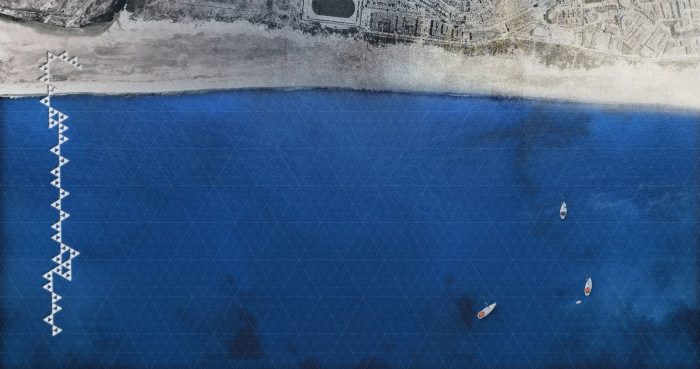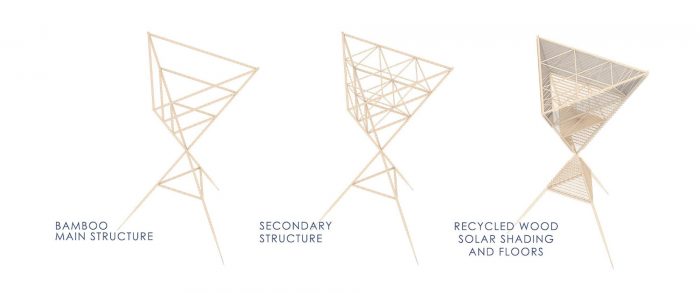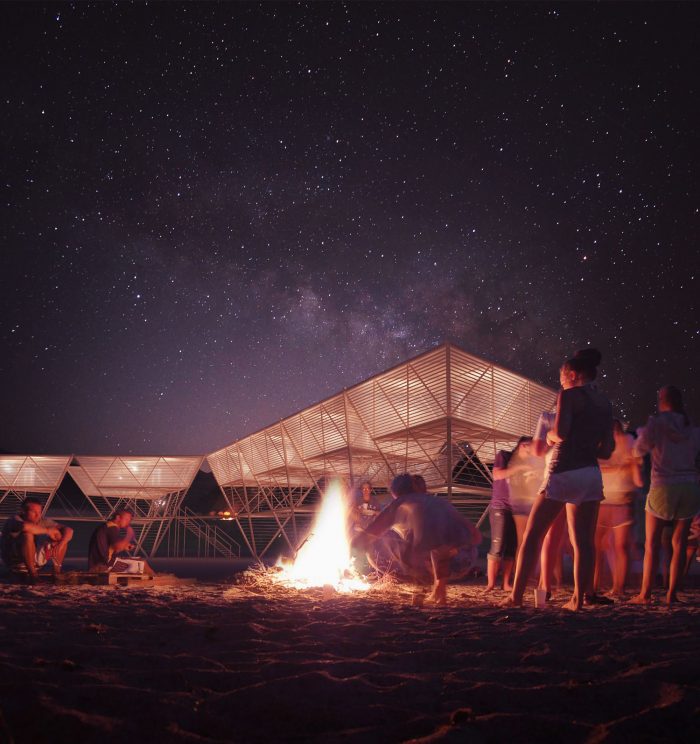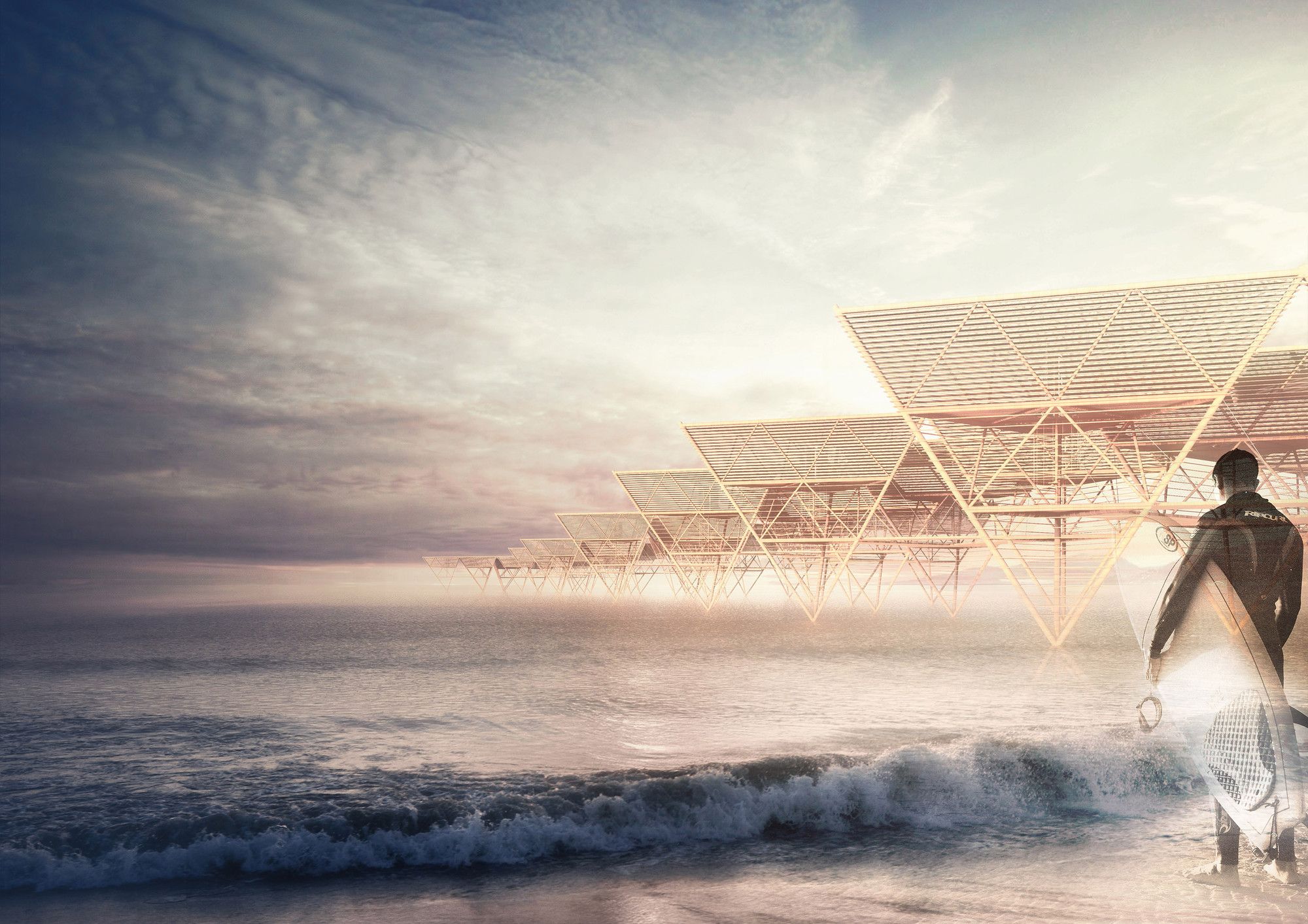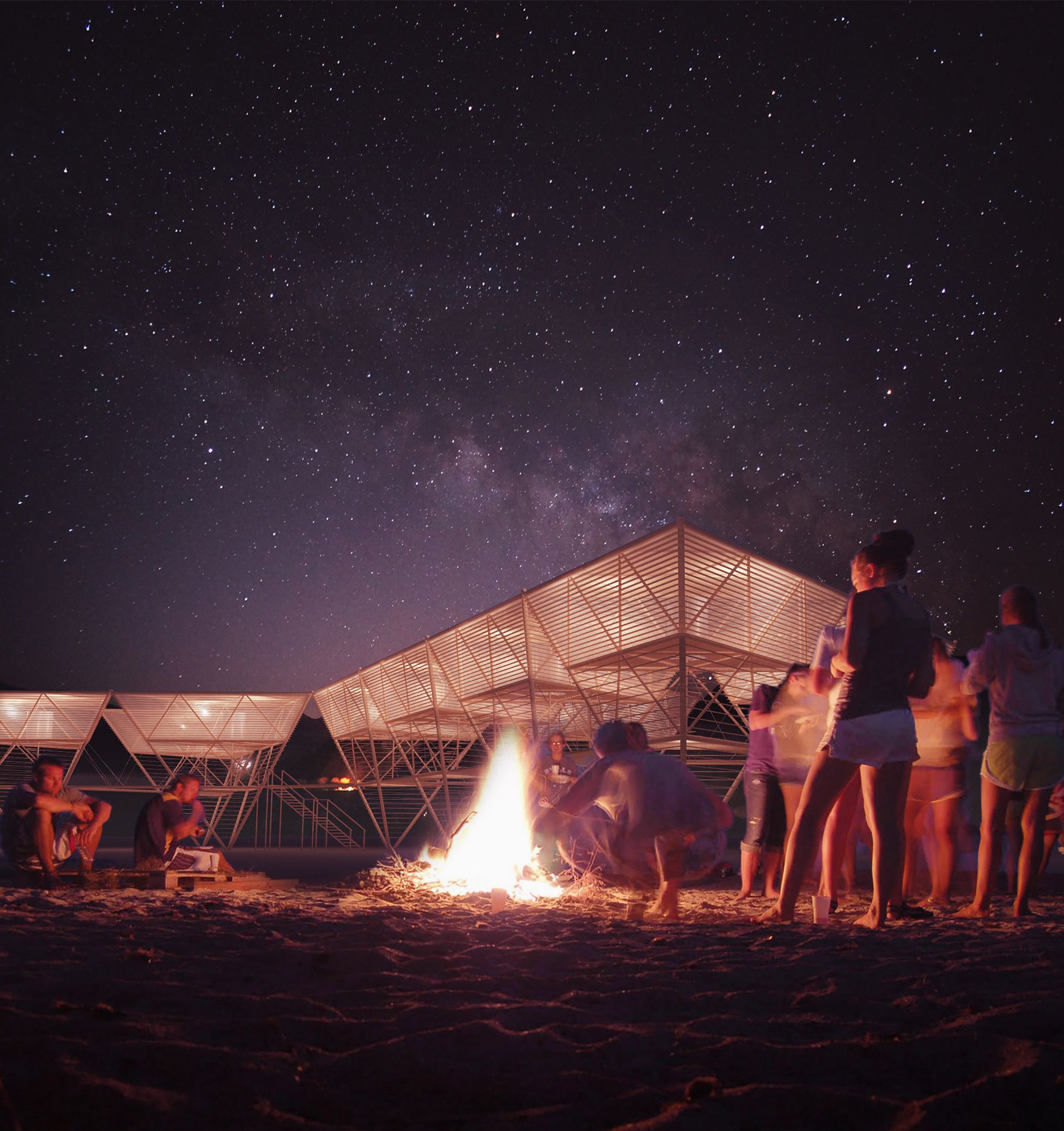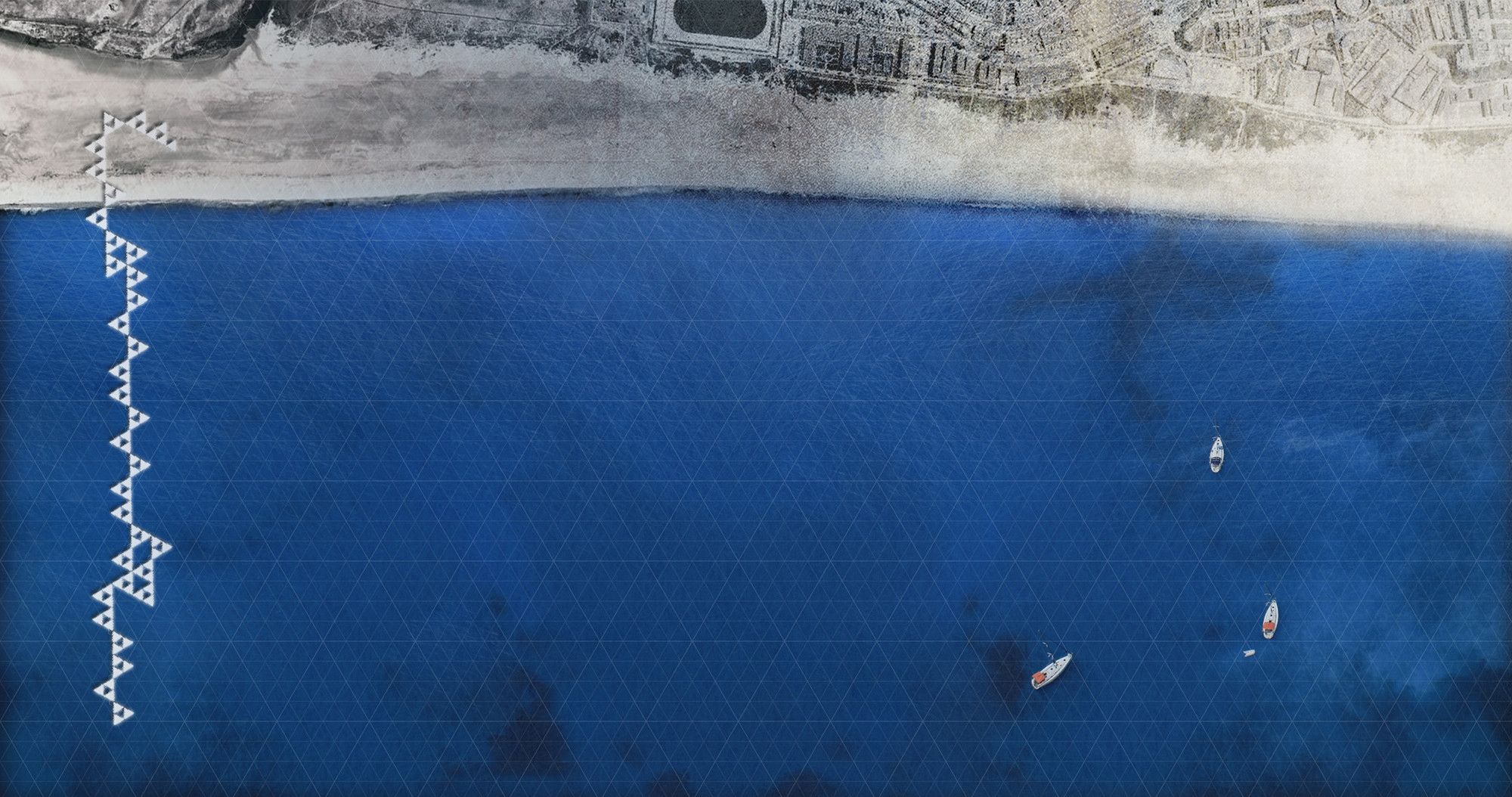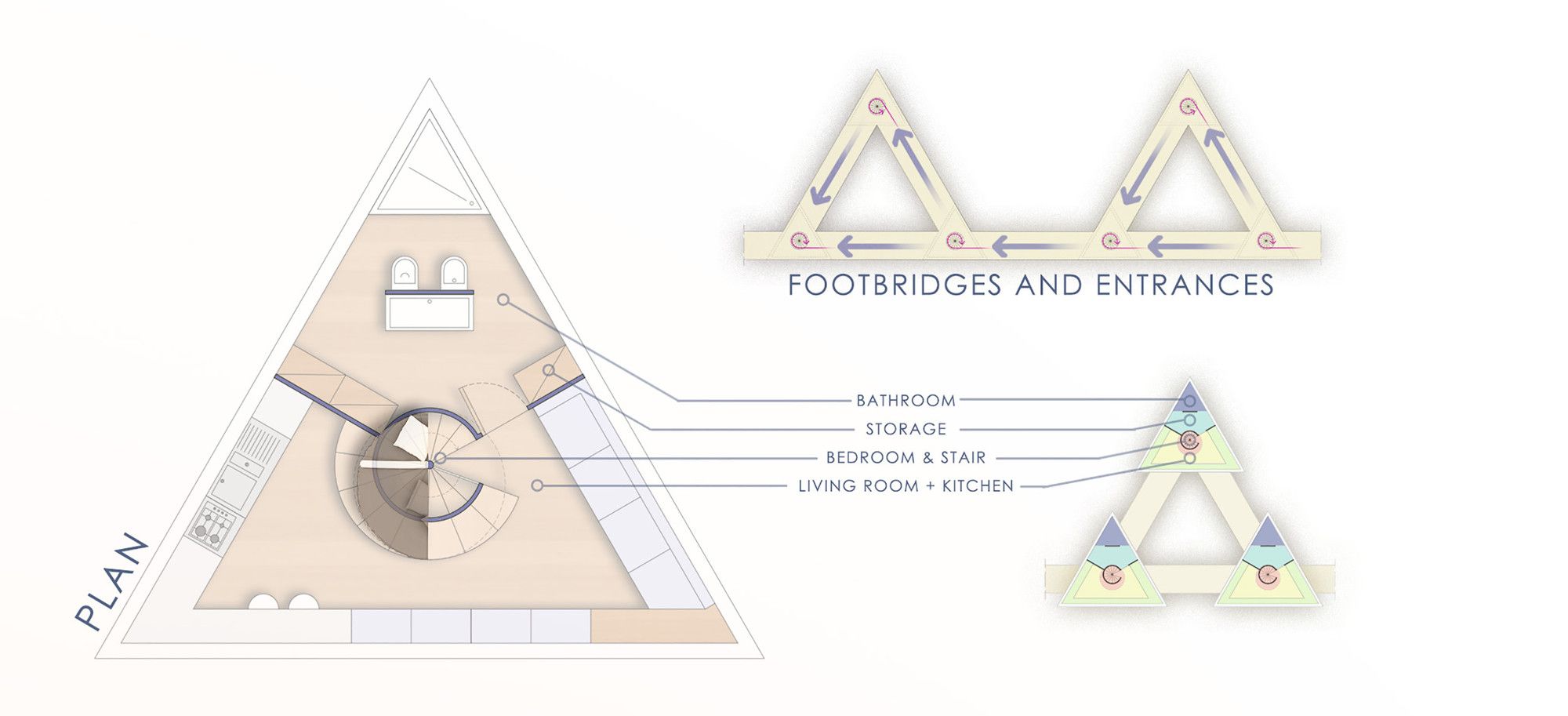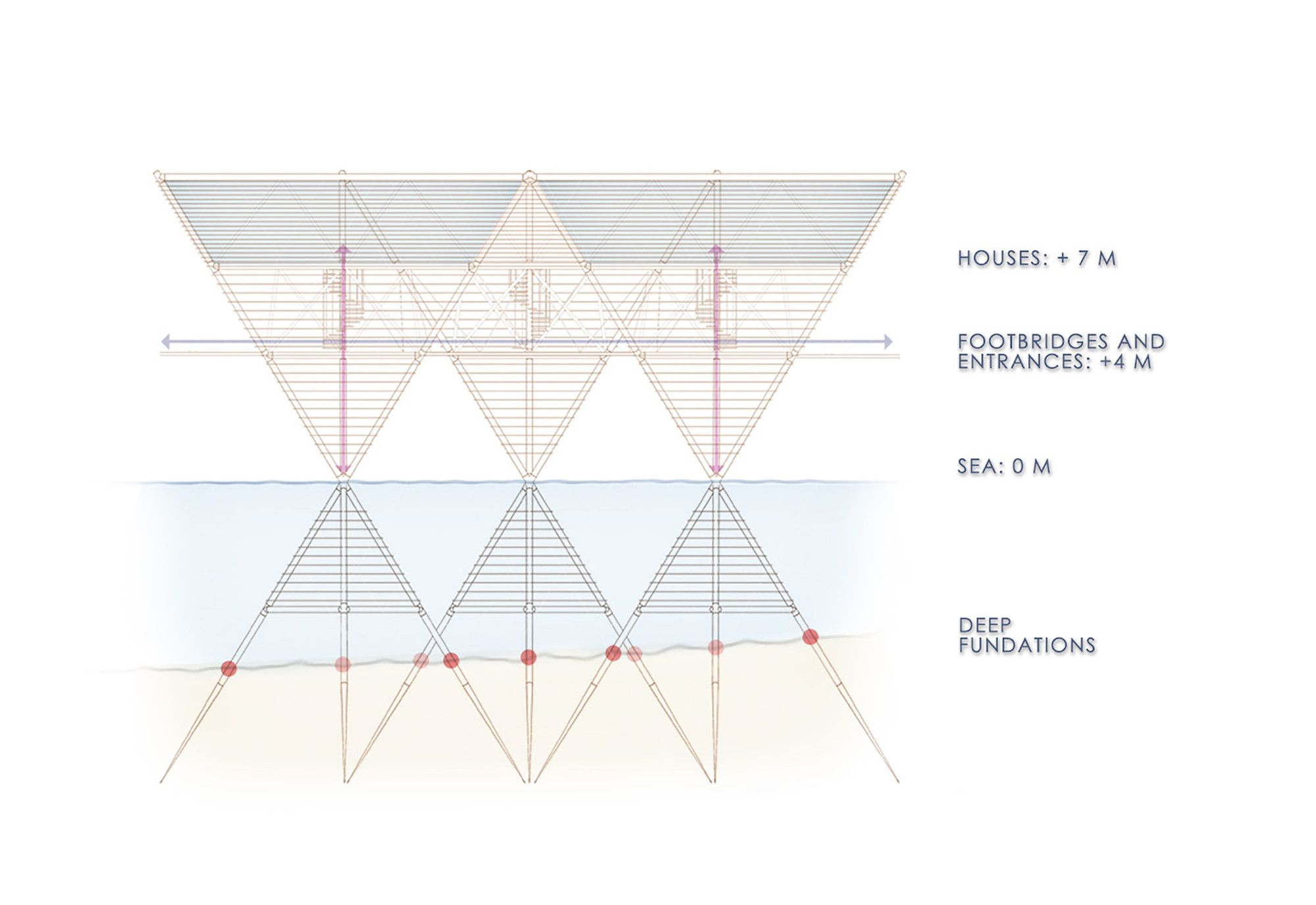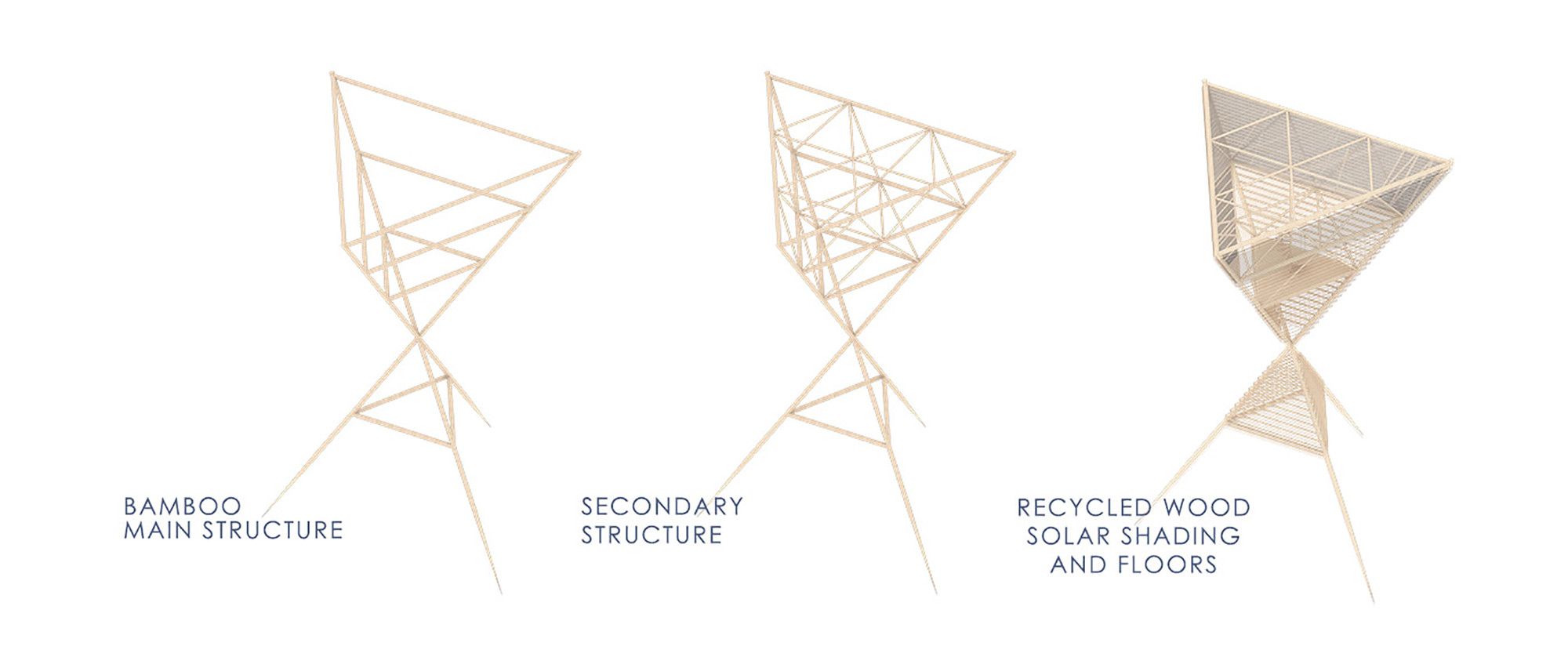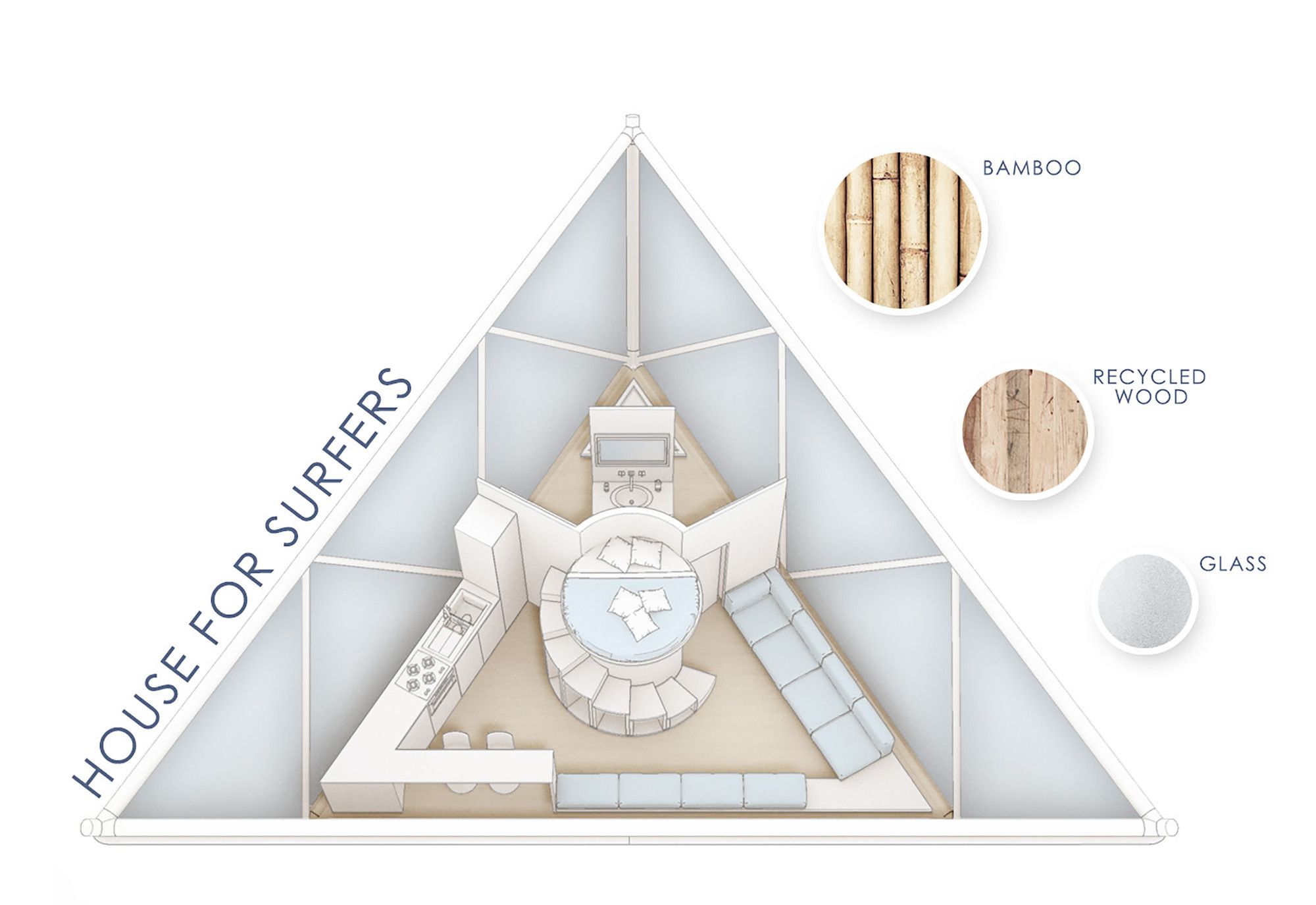Conceptual Sea Lantern Village | Barberio Colella ARC
The bamboo lanterns, housing for migrant surfers, is a stab at sustainable and temporary solutions presented on the competition brief by rethinkingarchitecturalcompetitions.com. The winning schemes were vastly different but presented the most efficiently temporary and user-friendly solution.
The site, off Tarifa shore in Spain, was utilized by the architects in a way that the residents would be connected to the sea as well as anchored on the shore. The community of these structures would be able to live off the grid of a formal city, an alluring theme observed in regards to migratory circumstances.
One hundred light-weight bamboo structures delicately litter the strip of the site, a series of tetrahedral sea lanterns that would be home to the migrant surfing community known to visit that coast of Spain frequently. The architects chose the shape and material based on structural integrity and the availability (the architects maintain that the climate of Spain will render the growth and production of bamboo possible and viable).
The pile foundation on the structure is a mirror image of the housing structure that would float above sea level. A boardwalk is the access of the units from the shore, at four meters above sea level, and it connects the large community with the land as well as mini-communities of three units with each other.
The space inside the structure is livable, providing storage, a sleeping area, a kitchen, and ablution facilities.
Looking at this scheme and the winners announced for the competition, issues on focused target demographics (usually the pretext of the competition) being generalized, i.e. surfing community, are raised by the people of those communities. As conceptual the project is, the generalization of the actual group of people designed for still creeps up. Due to the time constraints and output required (a single A1 landscape page) the issues regarding cultural expression and proper exploration and research on the existing target group becomes a costly expense and so the project focuses more on the scheme being temporary and livable.
Maurizio Barberio speaks of the project being “reversible architecture,” where the structure can be taken down completely, quickly and efficiently. This then could help re-establish the beach when the structure is no longer in use, reducing its imposition on that environment. At the end of the day, the scheme responds to the brief, physically and aspirationally, a new typology of sustainable, temporary housing.
Sea Lanterns Village. Image Courtesy of Barberio Colella ARC
Sea Lanterns Village. Image Courtesy of Barberio Colella ARC
Site Strategy. Image Courtesy of Barberio Colella ARC
Plan and Mobility Strategy. Image Courtesy of Barberio Colella ARC
Section. Image Courtesy of Barberio Colella ARC
Structural Framework. Image Courtesy of Barberio Colella ARC
Axonometric Diagram and Materials. Image Courtesy of Barberio Colella ARC


